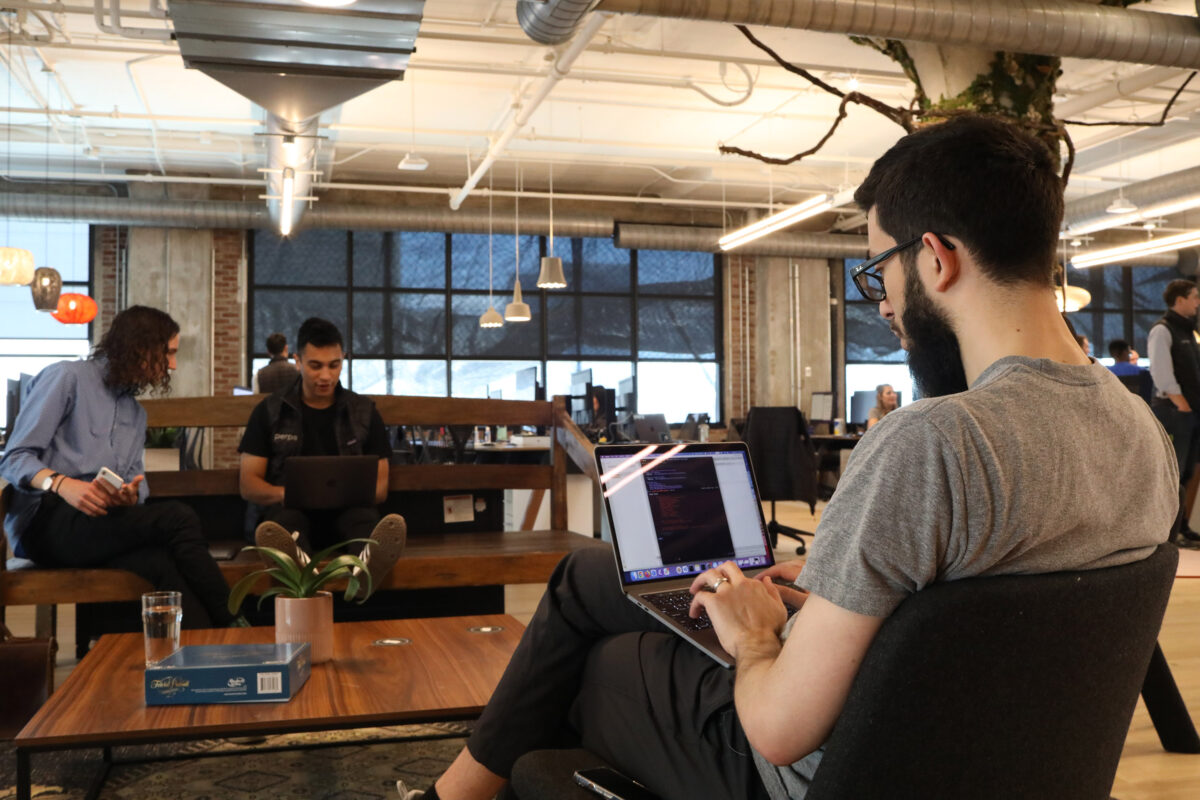So says Stephen Tang, a well-regarded veteran of science-backed tech executive roles who has a Wharton MBA, a PhD in chemical engineering and decades of service on university boards.
“Masks work, but mask mandates don’t,” Tang told me. Compulsion turns toxic. “Is it any surprise that RTO mandates don’t either?”
Yes, we’re still talking about return to office, but it’s entered a new phase.
Battle lines have shifted some after the pandemic shuffled the deck on all of our work-life habits. After clumsy false starts in 2021 and 2022, workplace flexibility for office professionals retreated in earnest last year. Tech teams at Delaware banks returned in near full force; Amazon HQ2 in northern Virginia stormed back and Comcast completed Philadelphia’s most-watched return-to-office strategy. This week, Minneapolis leaders cheered a new hybrid-office requirement for Target HQ workers. Policies at startups and smaller tech firms are all over the place, but those keeping offices have become more forceful.
More recently attention has turned to state and local governments, bringing a civic lens to the RTO debate.
Baltimore mayoral candidate Sheila Dixon (yes, that Sheila Dixon) has called for more in-office time for city workers, and new Philadelphia Mayor Cherelle Parker has lit up local debate with her call for full-time office work. Both routinely cite the local economic benefits of bringing city workers in-person.
Debates about which strategy works better are plainly silly. There’s a tradeoff. In-office time produces more creative and collaborative output from workers. Remote work offers those workers more flexibility and personal well-being. Given the tradeoff, different organizations will make different choices.
Instead, the debate’s frame is now around whether employers have a civic responsibility to require in-office time — and if that’s an effective strategy anyway.
That’s why I turned to Tang. One of his longest tenures was as the top dog at the University City Science Center, a respected urban research park in Philadelphia. More recently he was CEO of medical device company OraSure Technologies, which went public in 2020 and produced one of the COVID rapid tests. He published a book last year called “A Test for Our Time: Crisis Leadership in the Next Normal,” informed by his pandemic leadership.
I’ve known Tang for some 15 years, and have always found him polished and genuine, a consummate diplomat — I once suggested he was a credible outside candidate to run for Philadelphia mayor. In short, if I needed insight into how a strategy might come from a large employer with a civic commitment, then Tang was my guy.
Invest in place to cultivate credible human connection
So, must large employers balance civic and employee needs?
Tang confidently says yes. Something happens as your organization goes from bit player to certified institution: Your responsibilities widen.
“I’m a student of stakeholder capitalism,” he told me. Certain organizations must consider outcomes beyond only their financial interests, Tang argues.
Every chief executive today balances the creative output gains of an in-person workforce with the flexibility demands of professionals who like remote work, whether for tiny errands or critical family care. This is trickier for organizations with required in-person work — think about a city’s sanitation workers, or a biomedical firm’s lab technicians or a health system’s hospital staff. (Economists refer to this as tradable versus non-tradable jobs).
Big city mayors and big employer CEOs also have to weigh what knock-on effects their decisions might have. If your organization brings a few thousand workers to a downtown office for collaborative work, that can boost spending on transit, food and nightlife.
Encourage in-office time on predetermined days, make them worthwhile and just keep doing it
Employees have two credible criticisms of this civic defense of RTO: one of the office itself and one outside of it.
First, a popular meme of the moment is to roast employers for lame (cheap) attempts at so-called “office culture.” Think of an occasional box of donuts followed by an afternoon of in-office video calls because few other employees are on site.
Here’s why proponents advocate for a fixed hybrid schedule: Encourage in-office time on predetermined days, make them worthwhile and just keep doing it. Management consulting giant Accenture is programming their regional offices, concentrating meetings and investing in speakers and events.
Tech teams with offices should be the loudest supporters of the return of tech meetups. Invest in place: not just amenities but also credible human connection.
The hub-and-spoke urban core is a compromise
The second, thornier criticism is whether office time is a credible local economic strategy at all — especially because worker flexibility can have its own civic good in supporting child and family care.
It may depend where that office is. Mandating a workforce to drive to your suburban business park can drive in-person collaboration, but the civic gains are likely small.
By contrast, urban employers are something different. It’s true that a remote workforce can buy lunches and host happy hours at non-downtown locations — bringing more weekday activity to neighborhoods like Philadelphia’s Fishtown and Pittsburgh’s Squirrel Hill and satellite cities like Towson, Maryland.
“The office still matters. The question is how to return to a dynamic place.” Stephen Tang
But the enduring economic importance of the urban core is that of a crossroads. Different people come for different reasons, and this intermingling of classes and industries and backgrounds creates magic.
“We need those collisions,” Tang said.
The hub-and-spoke ideal of that urban core is a compromise: With a little effort, everyone in a region can get to this place more easily than they all can get to any other single area.
Work has changed. A third of professional work hours are done remotely now, when just 5% were in 2019. That won’t go back entirely. Downtowns must remake themselves, as they have before. More property should be housing than offices. More coworking spaces will pop-up in residential areas. Commercial corridors will focus on experiences, with more Instagram-friendly activations than cubicles.
But in-person work matters still. Employers that invest in offices can create business value, and this in turn does create civic value.
“The office still matters,” Tang said. “The question is how to return to a dynamic place.”
Framing it as a mandate is the wrong approach, he says. Pick priority days, encourage it and win back hearts and minds over months, if not years. Habits and traditions take time. Forcing something may feel like it’ll happen faster, but there are greater costs.
“Just as you think you’re forcing someone into the behavior you want,” Tang said, “you could be pushing them into doing the exact opposite.”
Before you go...
Please consider supporting Technical.ly to keep our independent journalism strong. Unlike most business-focused media outlets, we don’t have a paywall. Instead, we count on your personal and organizational support.
Join our growing Slack community
Join 5,000 tech professionals and entrepreneurs in our community Slack today!

The person charged in the UnitedHealthcare CEO shooting had a ton of tech connections

From rejection to innovation: How I built a tool to beat AI hiring algorithms at their own game

Where are the country’s most vibrant tech and startup communities?



